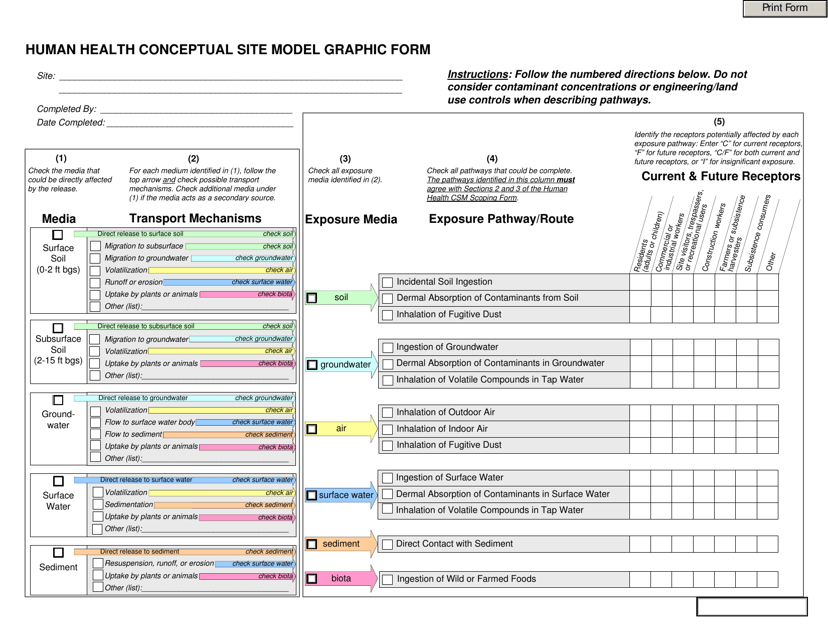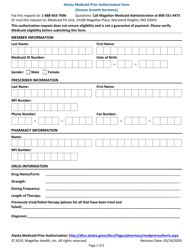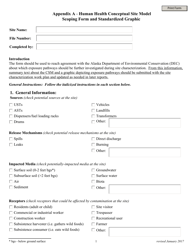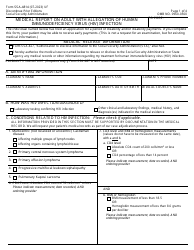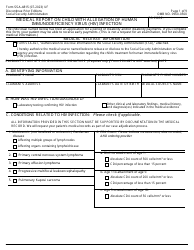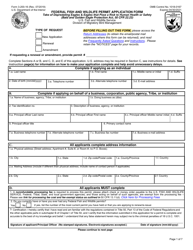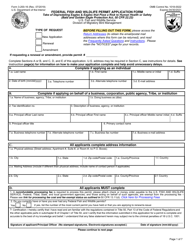Human Health Conceptual Site Model Graphic Form - Alaska
Human Health Conceptual Site Model Graphic Form is a legal document that was released by the Alaska Department of Environmental Conservation - a government authority operating within Alaska.
FAQ
Q: What is a Conceptual Site Model?
A: A Conceptual Site Model is a graphic representation of a site that shows how contaminants may move through the environment and potentially impact human health.
Q: Why is a Conceptual Site Model important?
A: A Conceptual Site Model helps scientists and regulators understand the potential risks to human health posed by contaminants at a site.
Q: What does the Human Health Conceptual Site Model show?
A: The Human Health Conceptual Site Model specifically focuses on how contaminants may enter the body and the potential pathways of exposure.
Q: How is the Conceptual Site Model created?
A: The Conceptual Site Model is created using available data and information about the site, including contaminant concentrations, geology, hydrology, and land use.
Q: Who uses the Conceptual Site Model?
A: The Conceptual Site Model is used by scientists, regulators, and other stakeholders involved in assessing and managing contaminated sites.
Q: What are the benefits of using a Conceptual Site Model?
A: Using a Conceptual Site Model helps ensure that potential risks to human health are properly evaluated and addressed, and that appropriate remediation or mitigation measures are implemented at contaminated sites.
Form Details:
- The latest edition currently provided by the Alaska Department of Environmental Conservation;
- Ready to use and print;
- Easy to customize;
- Compatible with most PDF-viewing applications;
- Fill out the form in our online filing application.
Download a fillable version of the form by clicking the link below or browse more documents and templates provided by the Alaska Department of Environmental Conservation.
